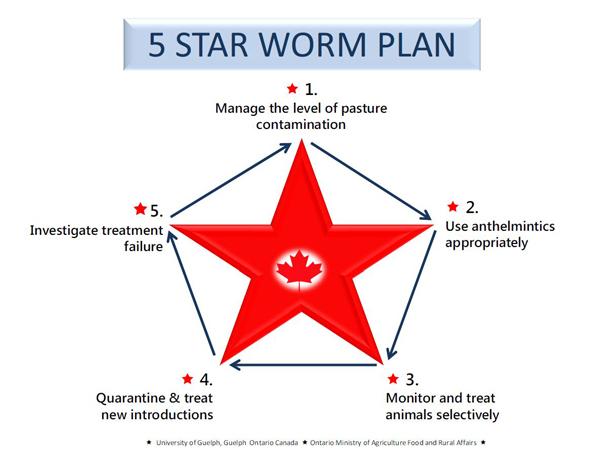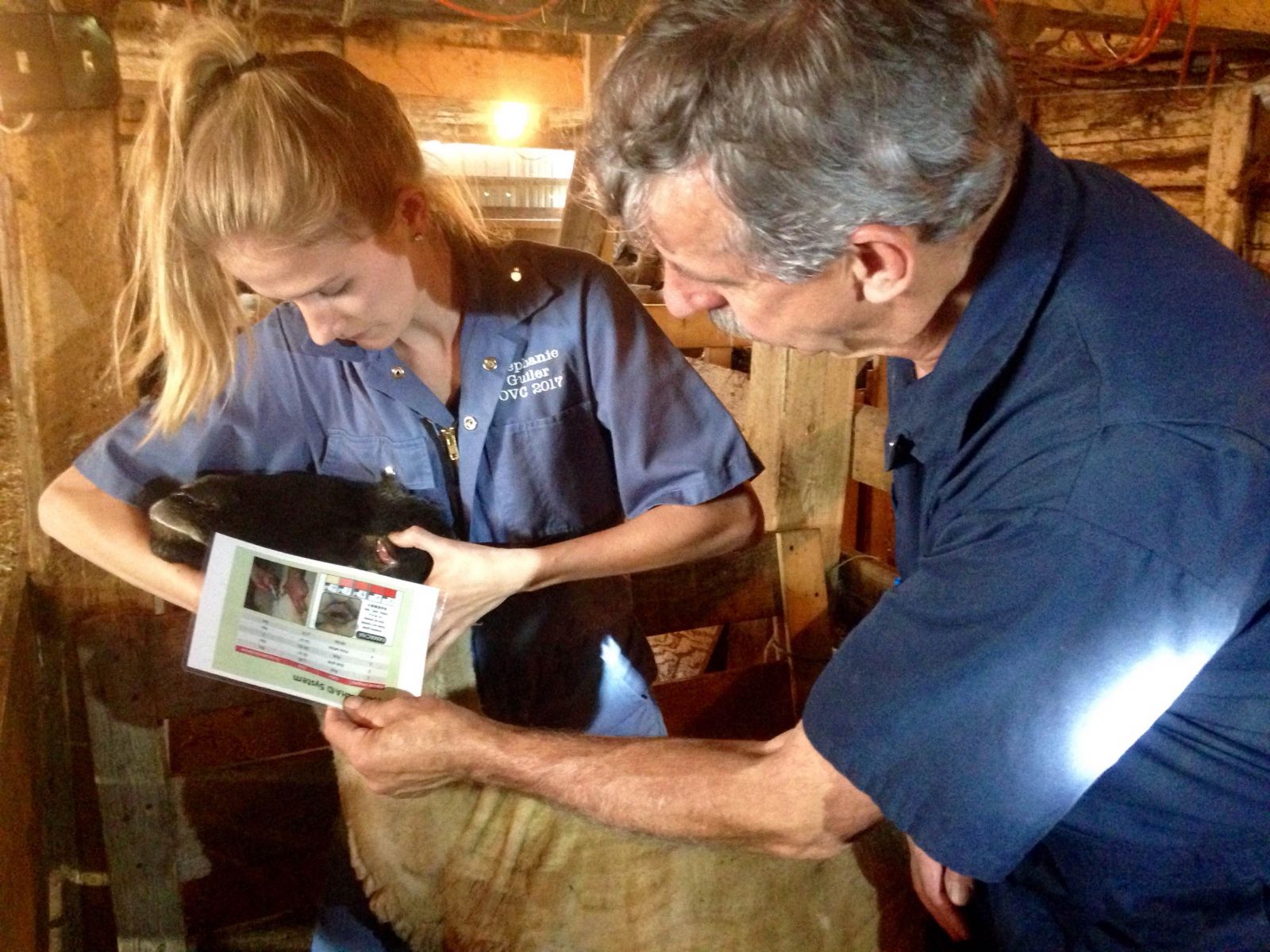Veterinary medicine is a constantly evolving field, with new pharmaceutical products being released every year. Drugs can play an important role in preserving the health of individuals and populations as a whole. However, they need to be used in a responsible and appropriate manner. In recent years the issue of drug resistance has become a hot topic. We will explore this complex problem by looking at anthelmintic resistance in sheep.
Sheep kept on pasture can become infected with various types of roundworms that live in the gastrointestinal tract. These parasites can cause a decrease in production and be detrimental to the sheep’s health. One parasite in particular, haemonchus contortus, also known as the ‘barber pole worm’, is highly pathogenic to sheep. It attaches to the inner lining of the stomach and feeds on blood, leading to anemia, edema (bottle jaw) and even death. Therefore, most farmers choose to deworm their flock with anthelmintics. This should lead to healthier sheep and higher production numbers, right? Not always.
The issue is that these gastrointestinal nematodes can evolve over time and no longer be affected by the dewormer, leading to overwhelming worm burdens in sheep. In a recent study on 47 Ontario farms, it was found that most farms had resistance to Ivermectin and fenbendazole, two commonly used anthelmintics in sheep. To make matters even more interesting, haemonchus contortus, our evil barber pole worm, was the main parasite responsible for the resistance. The question becomes: do we treat with a new class of drug that has a different mechanism of action, or do we change our current treatment protocols? The answer: we do both and more!
The Ontario Veterinary College and the Ontario Ministry Agriculture, Food and Rural Affairs have come up with the 5 star worm plan that focuses on selective treatments as well as minimizing drug use and pasture contamination.
 The goal of programs like this one is to promote proper drug use, maximize animal health and mitigate long term problems like drug resistance, ultimately being of benefit to the industry as a whole. It is evident that long-term, sustainable control of parasites in sheep requires integration of multiple control methods.
The goal of programs like this one is to promote proper drug use, maximize animal health and mitigate long term problems like drug resistance, ultimately being of benefit to the industry as a whole. It is evident that long-term, sustainable control of parasites in sheep requires integration of multiple control methods.
Through this brief overview of resistance to anthelmintics in sheep, it is important to be aware that drug resistance is a real issue affecting individual animals, to whole industries, and everything in between. The development of guidelines for prudent drug use in both the human and animal world is key to managing resistance. It is our duty as students, veterinarians, readers, and members of the general public to stay educated on the matter of drug resistance. After all, it is the choices we make today that will shape our world of tomorrow.
Dr. Henry Ceelen and I are using the FAMACHA score on a ewe; the system estimates the degree of anemia in sheep through use of a color guided chart that is compared to the mucous membranes around the eye. FAMACHA can be used as an aid to determine which ewes require treatment, acting as part of “star 3” in the 5 star approach. Open communication and education of the producer is imperial to ensure that all 5 stars of the worm plan are covered. We are glad to have helped this farmer on the ongoing, ever-changing road towards a healthy flock.
Some links for more information:
For the sheep enthusiast:
http://www.uoguelph.ca/~pmenzies/Handbook_Home.html
http://www.guelphlabservices.com/files/AHL/OTHER%20PUBLICATIONS/Andrew%20Peregrine.pdf
http://www.ontariosheep.org/LinkClick.aspx?fileticket=ITYCxYTt884%3D&tabid=113
For general antimicrobial resistance in agriculture:
http://www.omafra.gov.on.ca/english/livestock/animalcare/amr/facts/13-077.htm#farm

